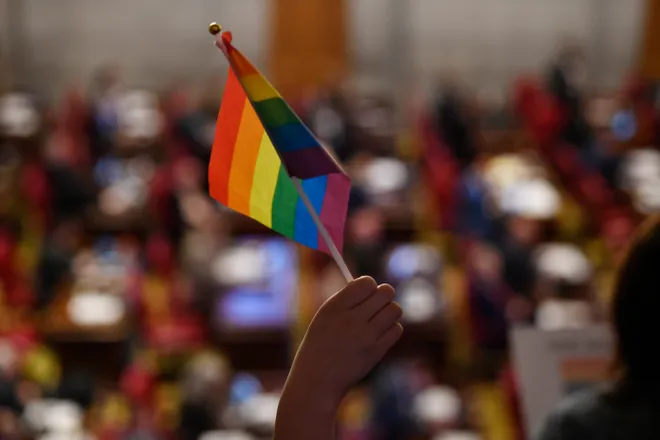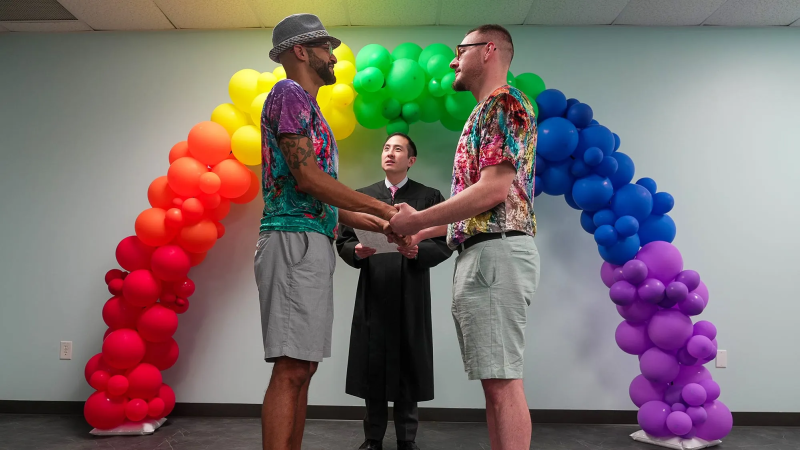LGBTQ representation in government is growing but still disproportionate: Graphics explain

Nearly 1,300 elected officials in the U.S. are a part of the LGBTQ community − a number that continues to grow every election cycle but still falls far short of being representative of the LGBTQ community.
About 7.6% of U.S. adults now identify as lesbian, gay, bisexual, transgender, queer, or as something other than heterosexual, according to a recent Gallup poll. That’s compared to 3.5% in 2012, the year the national polling agency began measuring sexual orientation and transgender identity.
While 7.6% of adults identify as LGBTQ+, less than 1% of elected officials in the U.S. identify the same, though there's no way to quantify those who hold office but haven't come out publicly.
In order for the government to be fully representative of the queer population, more than 35,000 LGBTQ people would need to be elected, according to the Victory Institute, a nonprofit focused on training LGBTQ+ leaders to run for office.
Although the LGBTQ community is underrepresented in government, an annual report by the organization did identify gains in several areas.

LGBTQ+ representation in government
According to the most recent year of data available (2022), those identifying as gay represented the largest share of LGBTQ elected officials, with 544 gay men in public office within local, state and federal governments.
The following groups made gains between 2021 and 2022:
- Non-binary and genderqueer elected officials increased from nine to 12
- Transgender elected officials grew from 41 to 45
- Bisexual elected officials increased from 71 to 90 during the same time period
The growing number of adults identifying as LGBTQ+ represents a greater sense of societal acceptance and/or support systems for those who identify as queer, Brandon Robinson, an associate professor and department chair of gender and sexuality studies at the University of California, Riverside, previously told USA TODAY.
"More people identifying as LGBTQ is often a sign that more people feel safe and/or comfortable to openly claim an LGBTQ identity," they said.
Map shows which states have LGBTQ+ representation in public office
Alabama, Wyoming and Idaho all have one elected official that identifies as queer. California, Illinois, Pennsylvania, Massachusetts and Michigan all have more than 50 LGBTQ+ elected officials serving in local, state and federal office.
Ten states have fewer LGBTQ+ elected officials in 2022 compared to 2021. During the same time period, 22 states have more LGBTQ+ elected officials, the Victory Institute reported.
Between June 2021 and 2022, the share of LGBTQ+ elected officials who were affiliated with the Democratic Party increased from 73.1% to 75.1%. The share of LGBTQ elected officials that are affiliated with the Republican party was much smaller, at 3%.
"LGBTQ elected officials are on the front lines of defending our rights and freedoms, which are under threat at every level of government," Victory Institute President and CEO Annise Parker, also the mayor of Houston, says on the group's website. "LGBTQ elected officials represent the strength and diversity of not only who we are as a society now, but also the America we aspire to build for future generations."
Data trends:Portion of US adults identifying as LGBTQ has more than doubled in last 12 years
More than just 'firsts':LGBTQ elected officials carve space for a future generation of politicians
Contributing: Marc Ramirez
Disclaimer: The copyright of this article belongs to the original author. Reposting this article is solely for the purpose of information dissemination and does not constitute any investment advice. If there is any infringement, please contact us immediately. We will make corrections or deletions as necessary. Thank you.



